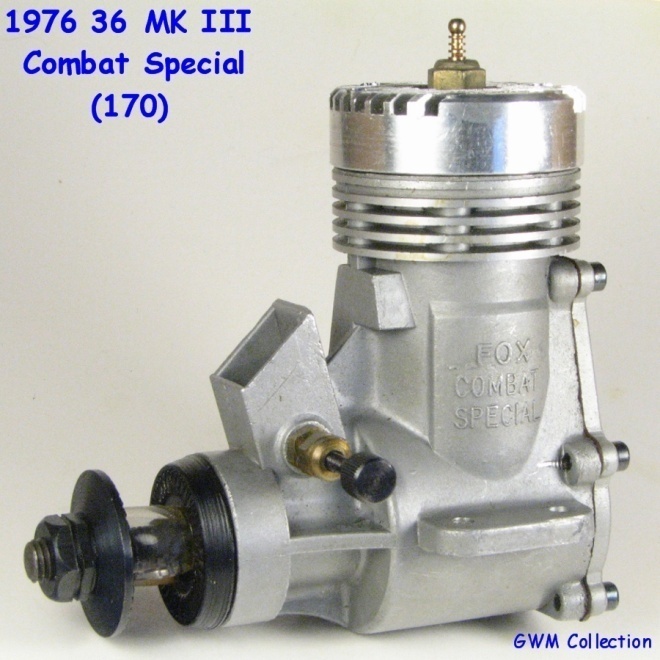
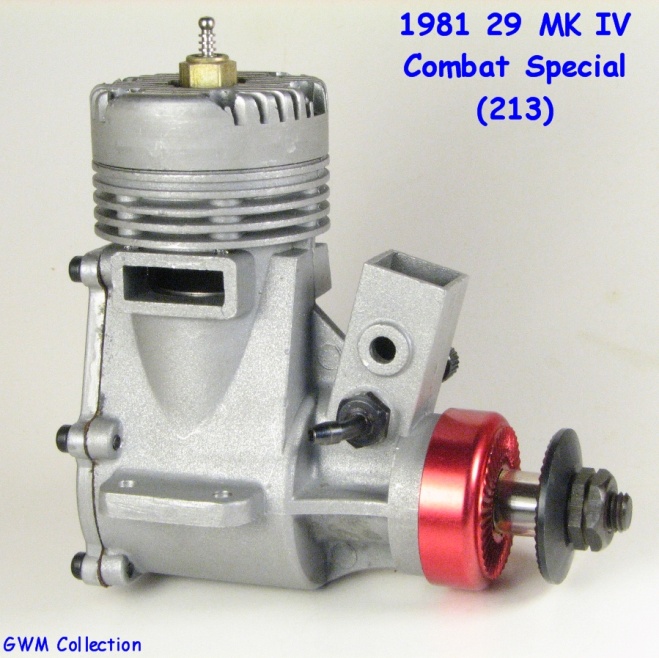
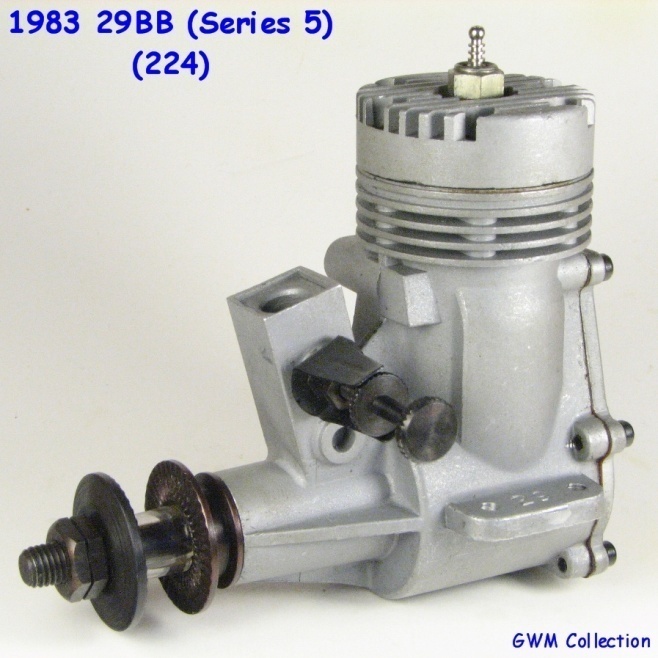

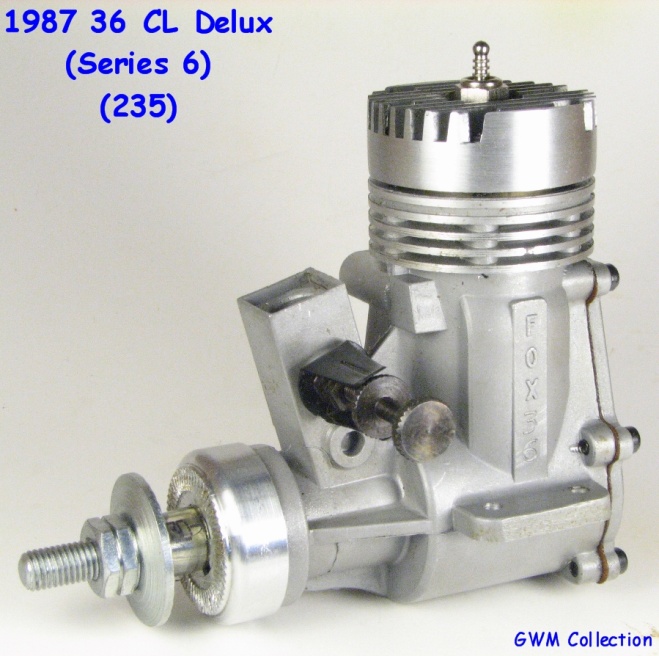

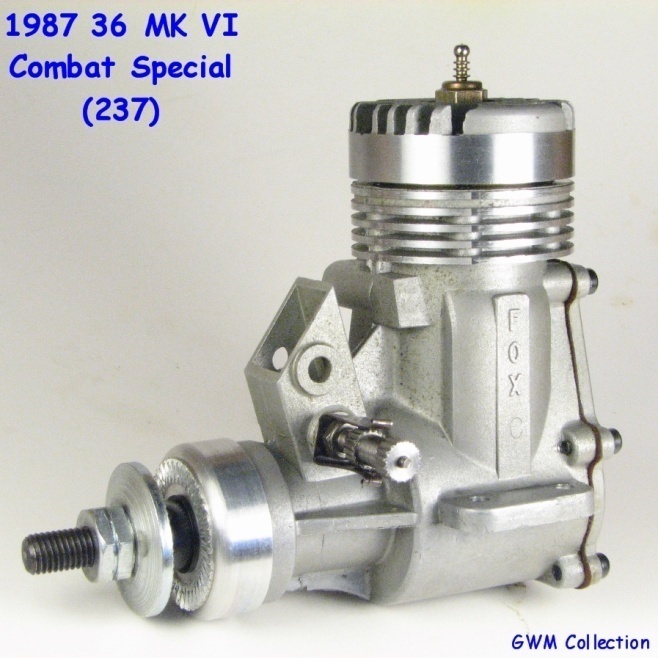

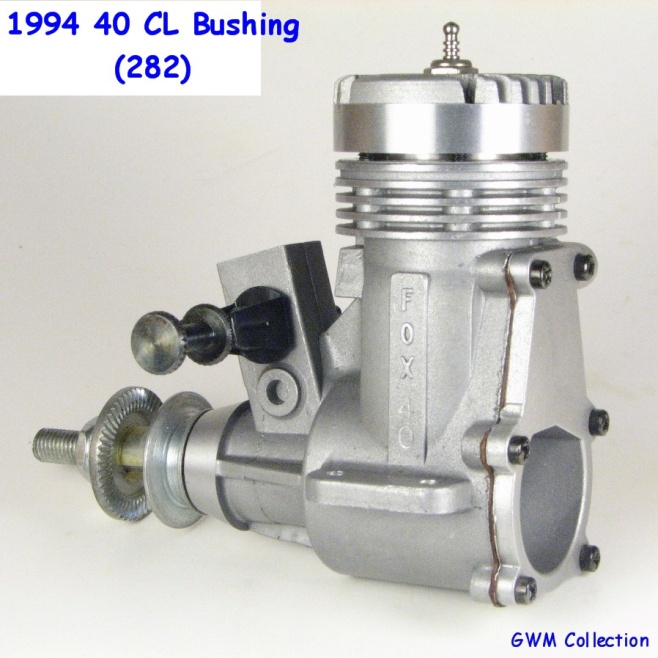
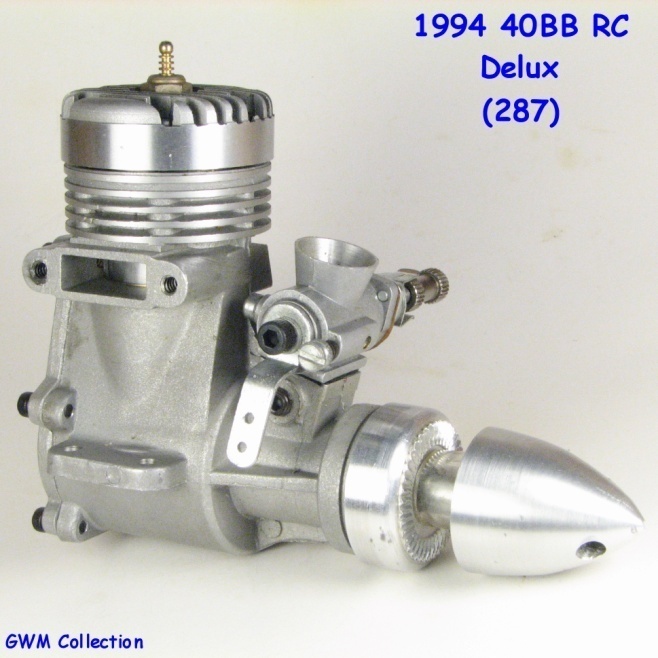
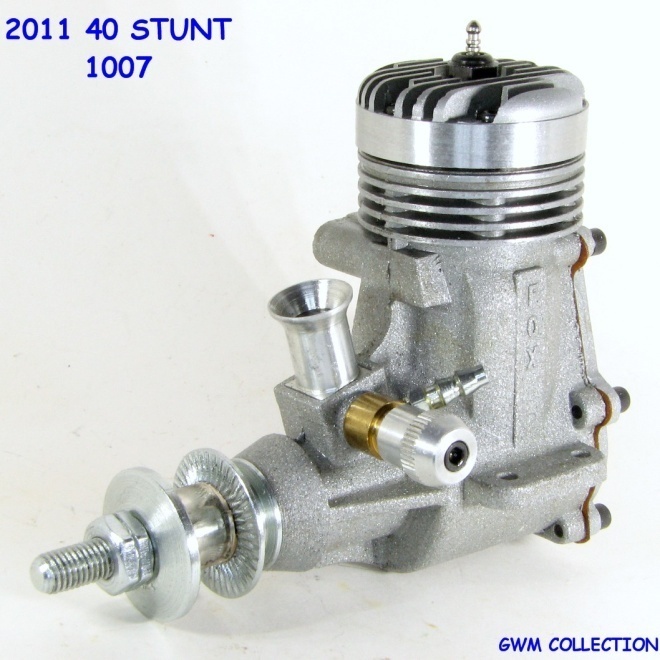
*** The MK III Combat Special Line***
| Continuing his long line of Combat Special Engines, Fox introduced the 36 MK III Combat Special (170), .800 x .715 B&S in 1976. It utilized schneurle porting, a 2 piece button head design, lapped iron piston, the 6 bolt high rear cover style case, and a twin BB crankshaft. “Fox Combat Special” was cast on the bypass. A .29 version was also available, “29” stamped on top of the left mounting lug. Unique this year, the 29 had a .730 x .715 B&S thus the 36's crankshaft could be used, not a special 29 crank. |  |
| The MK III was quite successful and was followed by the MK IV in 1981. It was also available in a .29 version (213). These engines had a high venturi with 2 positions for the NVA, the lower for a pressure fuel system with the 2 piece NVA or suction using a venturi restrictor and the 14010 NVA in the top position. A lightweight red anodized cupped aluminum prop driver shielded the front bearing in the event of a crash. The crankshaft also used a replaceable stud for the propshaft. |  |
| This case was modified with a wider exhaust stack for muffler mounting, a single rear BB with the crankshaft running in case material in the front, and was sold as a 29, 36, and 40 known as the Series 5. “29” or “40” was stamped on top of the left mount; no marking indicated a 36. The 29 BB CL Series 5 (224), also sold as an RC version, was the last 29 Fox produced. |  |
| Fox also referred to the Series 5 as the “C” frame. The 1983 40 Compact RC Series 5 (229), .840 x .715 B&S, used a drop-in square shanked smaller version of the MK-X carburetor. Note that the “C” frame 40 also used the 36’s .715 throw crankshaft. These “C” framed 40s were way over square, .840 x .715 B&S instead of the old .800 x .790 used in earlier years. |  |
| The case was again modified in 1987 to use twin BBs and a vertical nameplate was cast on the bypass. “FOX” over “36” or “40” was stamped on the nameplate. The delivery of the special front BB was delayed and to get the engines on the market, Fox turned down the front bearing housing and ran the crankshaft in the case material at the front and a single rear BB. Collectors call these engines the Series 5½. RC versions are not known. The 36 (233) is shown. |  |
| Later in the year the special front BBs came in and the 36 CL Deluxe Series 6 (235) was announced. It used the cupped aluminum prop driver from the combat special and an ABC piston/cylinder setup. It was also available as an RC version and as an RC and CL 40 displacement. A lapped piston version was also available in all these combinations. |  |
| Also in 1987, Fox produced the Mk VI Combat Special (237) in the Series 6 case with an angled venturi and a new NVA with a fine female thread NV. “C” was stamped on the nameplate. The crankshaft was full diameter through the front BB, not stepped down as on most designs. This required a front BB with small balls and thin races, also used in the Series 6s (this bearing is now actually the rear BB used in the 25BB). The innards of the MK VI were naturally designed for combat. The first engines used an iron band pressed or shrunk on top of an aluminum piston in a steel liner. This didn’t work out too well (although Marvin Denny has a fix that works) and later versions used an ABC setup. |  |
| In 1994 Fox made the MK VII 36 Combat Special (281). The spraybar was moved tangent to the back of the venturi and setup for a remote NV. “7” is stamped on the nameplate. The bypass was widened and the crankshaft diameter was increased to 17mm. As of this date, this was the last Fox Combat Special. |  |
| The 1994 40 CL Bushing (282) was built in the Series 6 case, but used a bronze crankshaft bushing. It was also sold in an RC version. It is still sold. |  |
| The 1994 40 BB RC Deluxe (287) used a twin BB crankshaft, the new design single needle air bleed EZ carburetor, and an ABC setup The crankshaft was now stepped down at the front and used a more conventional BB than the early Series 6. |  |
| In 2011, the last production versions of the 40 (310) used Fox’s latest NVA. The actual last engine was a 2011 40 Stunt (1007) made in limited quantities with a bushed crank, iron/steel piston/cylinder, and Lew Woolard’s timing and combustion chamber designs. |  |